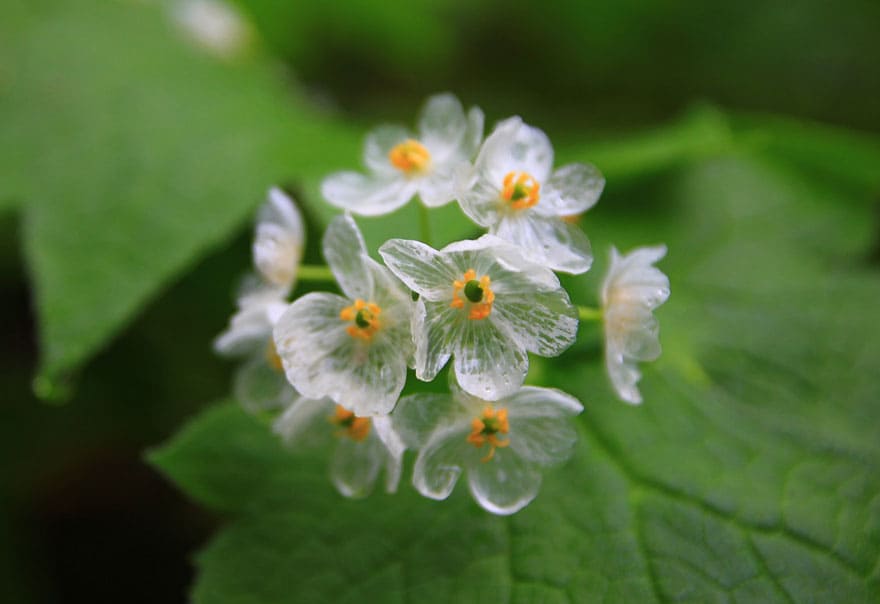Gardening enthusiasts often seek unique and intriguing plants to add to their collections, and the skeleton flower (Diphylleia grayi) is one such gem. Known for its translucent petals that turn clear when wet, this plant offers a magical display during rainy weather. Here’s how to successfully cultivate the skeleton flower in your backyard.
Understanding the Skeleton Flower
The skeleton flower is native to the wooded mountainsides of colder regions in Japan and China. It thrives in moist, forest-like conditions, making it ideal for shaded or semi-shaded gardens. The plant is named for the ghostly appearance of its white flowers, which become skeleton-like and see-through upon exposure to water.
Choosing the Right Spot
Select a location in your garden that mimics the skeleton flower’s natural habitat. The ideal spot is shaded or at least partially shaded, as the plant does not fare well in direct sunlight. The soil should be well-draining yet consistently moist. An area under trees or beside a north-facing wall could be perfect.
Soil Preparation
Skeleton flowers prefer acidic to neutral soil rich in organic matter. Before planting, enrich your garden soil with compost and peat moss to improve its structure and fertility. A pH between 5.5 and 6.5 is ideal. If you’re unsure about your soil’s pH, consider getting a soil testing kit from your local garden center.
Planting and Care
Plant skeleton flower rhizomes in early spring. Dig a hole about 2-3 inches deep, placing the rhizome with the buds facing upwards. Space the plants about a foot apart to give them room to grow.
Water regularly to keep the soil moist but not waterlogged. During dry periods, increase watering, especially if your plants are under trees or in areas with less natural rainfall. Mulching with organic material will help maintain soil moisture and temperature.
Fertilize lightly with a balanced, slow-release fertilizer at the beginning of the growing season to support healthy growth. Over-fertilizing can harm the delicate nature of the skeleton flower.
Seasonal Care
As autumn approaches, the skeleton flower’s foliage will die back. This is normal, as the plant is preparing for winter. Reduce watering during this time and protect the rhizomes from freezing temperatures with a thick layer of mulch.
In spring, remove the mulch gradually as temperatures begin to rise and new growth appears. This will prevent rot and allow the new shoots to come through easily.
Propagation
Propagating skeleton flowers can be done by dividing the rhizomes in late fall or early spring. Carefully lift the plant, separate the rhizome with a clean, sharp tool, and replant immediately.
By following these tips, you can enjoy the unique beauty of skeleton flowers in your garden for years to come. Their ethereal charm when in bloom, particularly during a gentle rain, makes them a wonderful conversation piece and a testament to the diversity and wonder of nature.


